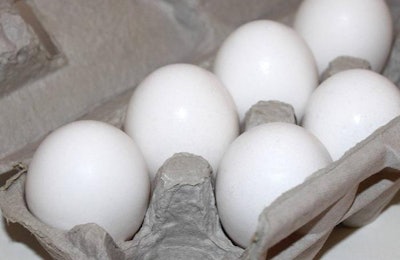
Cal-Maine Foods on July 22 reported net loss of $19.8 million for the fourth quarter of its 2019 fiscal year, which ended June 1. A 36.7% decline in net sales was also reported for the quarter.
The net loss for the quarter was a drastic switch from the net income of $71.8 million for the fourth quarter of the 2018 fiscal year. For the full year, Cal-Maine reported a net income of $54.2 million, down substantially from the $125.9 million for the 2018 fiscal year.
Net sales for the fourth quarter of fiscal 2019 were
Dolph Baker, chairman and chief executive officer of
“The unfavorable supply and demand balance and anticipated future egg supply growth trends have continued to affect market prices and our business. Over the past five quarters, we have noted our concern about the growing hatch rate pointing to a potential significant increase in laying hens and an oversupply of eggs. The USDA reported a near record high 341.5 million hens as of
Baker reported that specialty eggs, excluding co-pack sales, accounted for 23.3 percent of the company’s sales volumes for the fourth quarter, compared with 25.5 percent a year ago. Specialty egg volumes were affected by the greater price differential between conventional and specialty eggs.
However, he added, specialty egg revenue was 41.9 percent of total shell egg revenue, compared with 29.0 percent for the fourth quarter of fiscal 2018, reflecting less volatility in the average selling price for specialty eggs. Specialty egg prices were down 1.2 percent for the fourth quarter but were up 0.8 percent for the year.
“We remain focused on growing our specialty egg business, including addressing the expected higher demand for cage-free eggs,” Baker said. “We are working closely with our valued customers to meet this demand, and we will continue to offer a favorable product mix including cage-free and other specialty eggs.”
Update on Proposition 12 and its impact
With the passage of California’s Proposition 12 in 2018, minimum space requirements per hen will be increased beginning in 2020 and it will be mandated that all eggs and egg products sold in
In line with this ruling and other industry changes, Cal-Maine Foods is making the necessary investments in its operations to expand its cage-free capacity.
“Our previously announced projects in
Additional executive commentary
Baker added, “In spite of challenging conditions, our production facilities ran well throughout the year as our managers did an excellent job across our operations. Our farm production costs per dozen were up 1.7 percent over the fourth quarter last year primarily due to increased amortization costs as we adjusted flocks in response to market conditions. In addition, our labor costs were higher compared with the prior year. Our feed costs per dozen were down slightly for the fourth quarter but increased by 5.3 percent for fiscal 2019 compared with the prior year due primarily to the unfavorable crop conditions in the south-central
“We are proud of our ability to respond to changing market conditions, as we continued to execute our growth strategy in fiscal 2019. Going forward, we will focus on what we can control and manage our business for the long term in spite of the current challenges facing our industry. As always, we will strive to operate in an efficient and responsible manner, provide a favorable product mix, including cage-free and other specialty eggs, continue to invest in our operations and identify acquisition or other growth opportunities that enhance our production. Above all, we are focused on meeting the needs of our customers and providing outstanding service. We have a strong balance sheet that provides the financial flexibility to support our growth strategy, and we look forward to the opportunities ahead for
















